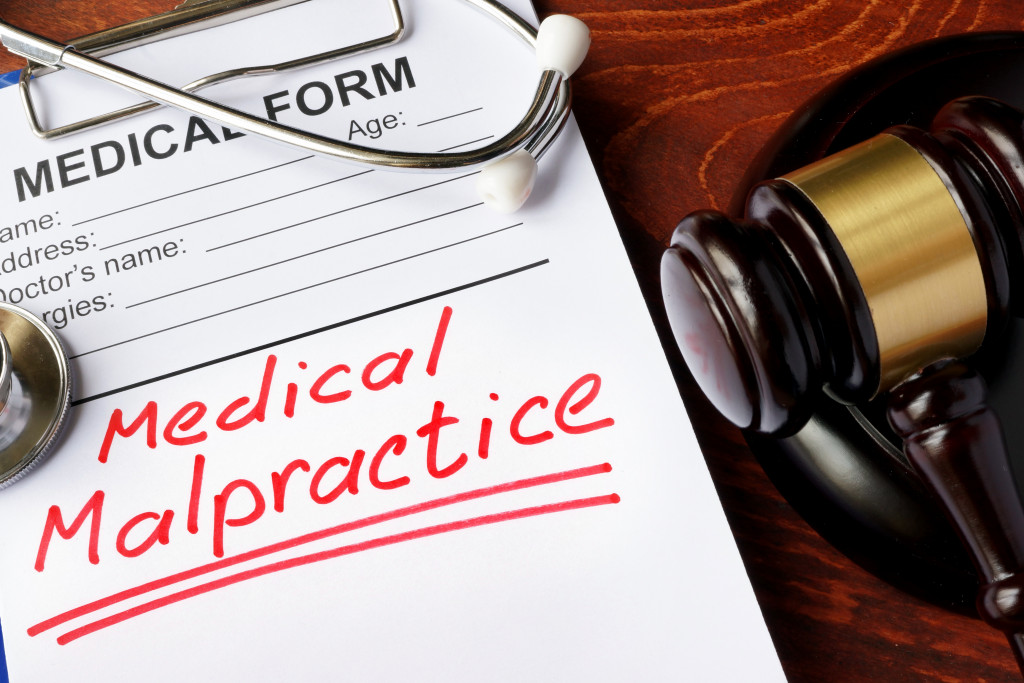- Medical malpractice, a leading cause of death in the U.S., can have severe consequences for both patients and clinics.
- Malpractice can lead to legal action, damage the clinic’s reputation, affect staff morale, result in compliance issues, and increase insurance costs.
- Infections, a leading cause of malpractice, can be prevented by using the right medical adhesives and implementing patient safety measures.
- Encouraging open communication and transparency among healthcare professionals and patients can significantly reduce misunderstandings and potential malpractice claims.
- Despite preventive measures, mistakes can occur and should be addressed promptly with empathy and integrity to prevent escalation into malpractice claims.
As a clinic owner, you must provide patients with the best possible medical care. However, despite your best efforts, medical malpractice can happen. Medical malpractice occurs when healthcare professionals, including doctors and nurses, fail to provide patients with the standard of care they need. This failure to provide proper care can cause serious patient harm and have severe consequences for your clinic. Here’s how medical malpractice can affect your clinic and ways to deal with it.
Medical Malpractice in The U.S.
It’s estimated that medical errors are the third leading cause of death in the country. This is a cause for concern, as medical malpractice can have severe consequences not only for patients but also for clinics and healthcare professionals. In addition to causing harm to patients, it can lead to lawsuits, damage your clinic’s reputation, and even result in losing medical licenses.
How Can Medical Malpractice Affect Your Clinic?
There are various ways medical malpractice can affect your clinic. Here are some of those ways:

1. Legal Action
The most immediate impact of medical malpractice is legal action against your clinic. Patients who suffer harm because of medical malpractice may file lawsuits against your clinic, seeking compensation for their injuries. The cost of defending against a medical malpractice suit and the damages that may be awarded can be financially devastating for your clinic.
2. Reputation Damage
Medical malpractice can also have long-term consequences for your clinic’s reputation. Patients who have suffered harm may share their negative experiences with others, leading to decreased patient trust and a loss of business. In addition, news of a medical malpractice lawsuit can spread quickly, affecting your clinic’s standing in the healthcare community.
3. Staff Morale
Medical malpractice can also affect the morale of your staff. Healthcare professionals named in lawsuits or accused of medical malpractice may feel demoralized and anxious about their jobs. They may also lose confidence in their abilities and the clinic’s ability to provide safe and effective medical care. This can lead to high turnover rates and decreased productivity.
4. Compliance Issues
Medical malpractice lawsuits can also lead to compliance issues. Depending on the nature of the allegations, your clinic may be subject to regulatory investigations and audits. These investigations can be time-consuming, costly, and stressful for your staff. They can also lead to fines and other penalties if compliance issues are discovered.
5. Increased Insurance Costs
Finally, medical malpractice can lead to increased insurance costs for your clinic. If your clinic is sued for medical malpractice, your insurance premiums may increase significantly. This can strain your clinic’s finances and make it more difficult to provide affordable healthcare to patients.
Ways You Can Deal With Medical Malpractice
As a clinic owner, it’s important to take proactive measures to deal with medical malpractice. Here are some ways you can do so:

Use The Right Adhesives
Infections are some of the leading causes of medical malpractice. To prevent infections, it’s crucial to use the right adhesives in wound care and other medical procedures. Make sure to invest in high-quality medical adhesives that are specifically designed for medical use and follow the manufacturer’s instructions carefully.
Implement Patient Safety Measures
Implementing patient safety measures can significantly reduce the risk of medical malpractice in your clinic. These measures can include thorough staff training, using checklists, and implementing protocols to prevent errors. Regularly reviewing and updating these measures can help ensure that your clinic is providing patients with the best possible care.
Encourage Communication and Transparency
Encouraging open communication and transparency between healthcare professionals, patients, and their families is essential in preventing medical malpractice. Patients should feel comfortable asking questions and expressing concerns about their treatment. Healthcare professionals should also be encouraged to communicate openly about potential risks and complications of medical procedures. This can help prevent misunderstandings that may lead to malpractice claims.
Have a Well-Defined Protocol for Dealing With Mistakes
Despite best efforts, mistakes can still happen in medical settings. It’s important to have a well-defined protocol for dealing with mistakes when they occur. This can include promptly apologizing and taking steps to rectify the mistake, such as providing additional treatment or offering compensation. It’s crucial to handle mistakes with empathy and integrity, which can help prevent them from escalating into medical malpractice claims.
Medical malpractice can pose substantial risks to clinics, both in terms of legal repercussions and reputation damage. However, through diligent and proactive steps, these risks can be mitigated. By focusing on patient safety, encouraging open communication, and effectively dealing with mistakes, clinics can enhance their quality of care and significantly reduce the chances of malpractice. All healthcare providers must strive to create a safe and effective care environment, thereby minimizing the scope for errors and enhancing patient trust.

